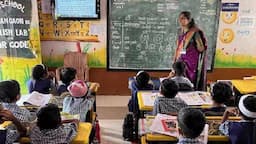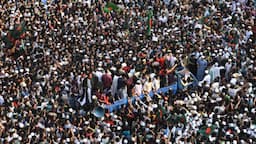India's population dynamics have long been a subject of discussion and analysis, with projections indicating a significant milestone of 1.7 billion by 2065, according to the UN Population Division. However, recent studies and government projections shed light on a lesser-discussed aspect – declining fertility rates. The Lancet Report projects a decline in fertility rates to 1.29 by 2051, challenging previous estimates and suggesting a potential stabilization of India's population below the projected figure.
Understanding Demographic Transition and Dividend
Demographic transition refers to the gradual shift in a population's composition over time, influenced by factors such as birth and death rates, migration patterns, and socio-economic conditions. The transition often leads to a demographic dividend, characterized by a higher proportion of working-age adults relative to dependents (children and elderly), which can fuel economic growth if leveraged effectively.

Triggers of Demographic Transition in India
Several factors have catalyzed India's demographic transition:
- Rapid Economic Development: Economic growth has improved living standards, healthcare, and education, leading to lower fertility rates.
- Reduction in Mortality Rates: Declining infant and child mortality rates have reduced the need for larger families for old-age support.
- Women's Empowerment: Increased education and workforce participation among women have contributed to smaller family sizes.
- Improved Living Conditions: Better housing and access to basic amenities influence family planning decisions.
Challenges and Opportunities

While demographic transition offers economic opportunities, it presents challenges:
- Dependency Ratio Shift: A decline in fertility rates may lead to an aging population, straining healthcare and social welfare systems.
- Regional Disparities: Transition rates vary across states, exacerbating economic and healthcare disparities.
- Labour Productivity: Managing the aging workforce while fostering skill development for the younger population poses challenges.
However, the transition also brings opportunities:
- Enhanced Labour Productivity: A declining population growth rate can boost per capita capital and infrastructure, enhancing productivity.
- Resource Reallocation: Reduced fertility rates enable investment in education and skill development, enhancing human capital.
- Women's Participation: With fewer childcare responsibilities, more women may join the workforce, driving economic growth.
The Path Ahead
To capitalize on these opportunities, India must focus on:
- Sectoral Redistribution: Investing in sectors with growth potential and spatially redistributing the workforce.
- Skill Development: Enhancing skills to meet evolving job market demands.
- Women's Empowerment: Promoting gender equality and women's participation in the workforce.
- Inclusive Policies: Addressing the needs of marginalized groups for inclusive growth.
Conclusion
India's demographic transition presents both challenges and opportunities for economic development. By prioritizing policies that harness its demographic dividend, India can emerge as a global economic powerhouse. However, effective policy formulation and implementation are crucial to ensuring inclusive growth and development in the evolving demographic landscape.










-1920x1080.jpg&w=256&q=75)





